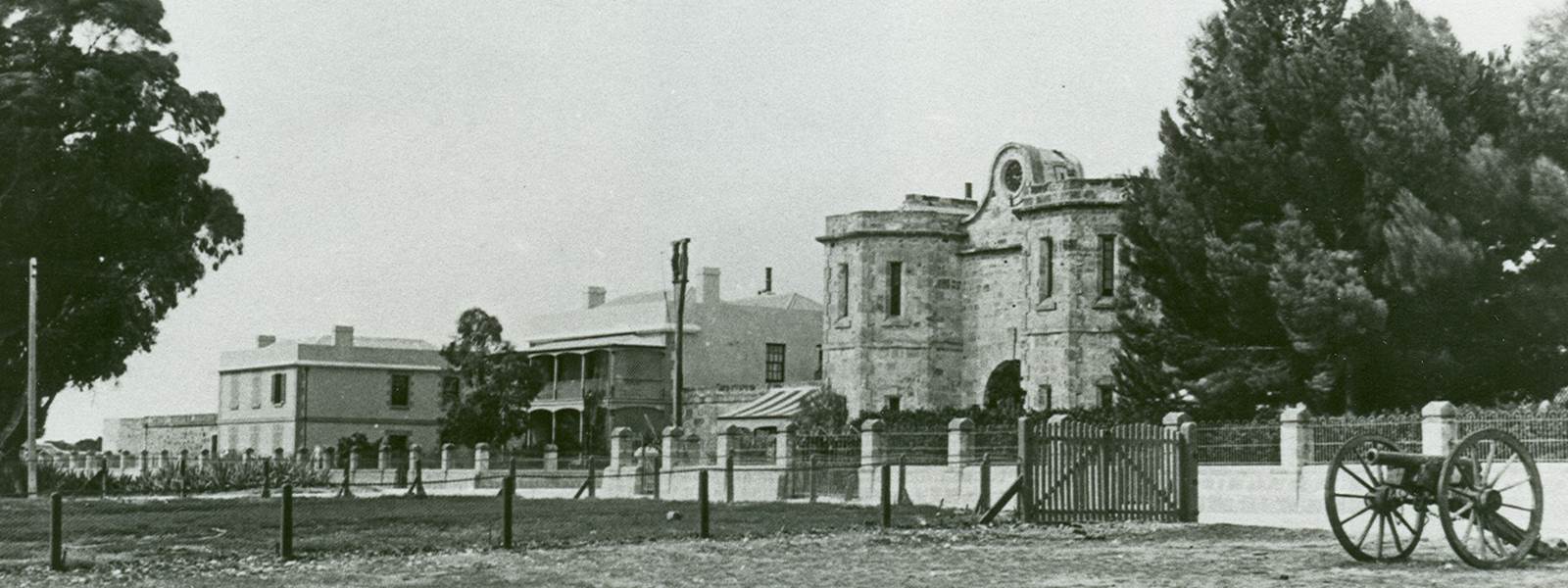
Joseph Nelson was born in 1819 in the village of Welton, near Hull in Yorkshire, England. His father died when Joseph was 15 and his elder brother inherited the family blacksmith business. It is assumed that following his apprenticeship under his brother, Joseph left the village to seek his living. He was enlisted in the Corps of Royal Sappers and Miners on 25 October 1842. Two years later he was serving on Gibraltar where he was stationed for four and a half years and where he married Ruth Jackson in 1848.
On his return to England, Joseph was assigned to the 20th Company Royal Sappers and Miners, specially formed to provide technical services to the colonies. This Company arrived in the Swan River Colony in 1851 with the Sappers designated as "Instructing Warders" to oversee the convicts in their construction of public works.
Nelson, by this time a Corporal, was first sent to Toodyay, buying land there in 1853. He was then reassigned to the Company's key project in Fremantle — the building of the convict prison. As a newly promoted Sergeant he took charge of the Prison's Blacksmith Shop.
Amongst his projects at the Convict Establishment was the construction of the magnificent Wray Gates in 1855. These gates lead from the Gatehouse into the main parade ground and were made from poor quality iron from convict ships. This meant their design and construction had to be carried out with some skill. Nelson's skill as a craftsman and Wray's skills as the designer of the gate are captured in the inscription on one of the gate's crossbars.
His job at the prison finished, he accompanied Captain Wray RE to Albany where he supervised convicts in the building of a lighthouse on Breaksea Island. Nelson later became the Lighthouse Keeper at Point King Lighthouse, built by civilian contractors at the same time as Breaksea Island. He took his discharge from the army as a Colour Sergeant in 1860. He was one of many of the original Sappers of the 20th Company who chose to remain in Western Australia as free settlers when the Company returned to England.
The Nelson family lived at the lighthouse until 1867. By now his family had grown to five children. After the lighthouse, Nelson returned to his trade and worked as a tinsmith in Albany. He later acquired the licence of the inn at Chokerup, a halfway house between Albany and Mount Barker. In the late 1870s the two eldest Nelson sons took up land at Eticup, near Broomehill. Joseph went with them and established a blacksmithy in the town. Ruth was ill and stayed in Albany, where she died in 1882.
Nelson lived out his years at Eticup, as a blacksmith for the local farmers and the coach traffic to and from Albany, serving as a member of the Broomehill Road Board from 1892 to 1895, and enjoying his life as a grandfather. He died in 1907 and is buried in the old cemetery at Eticup.
